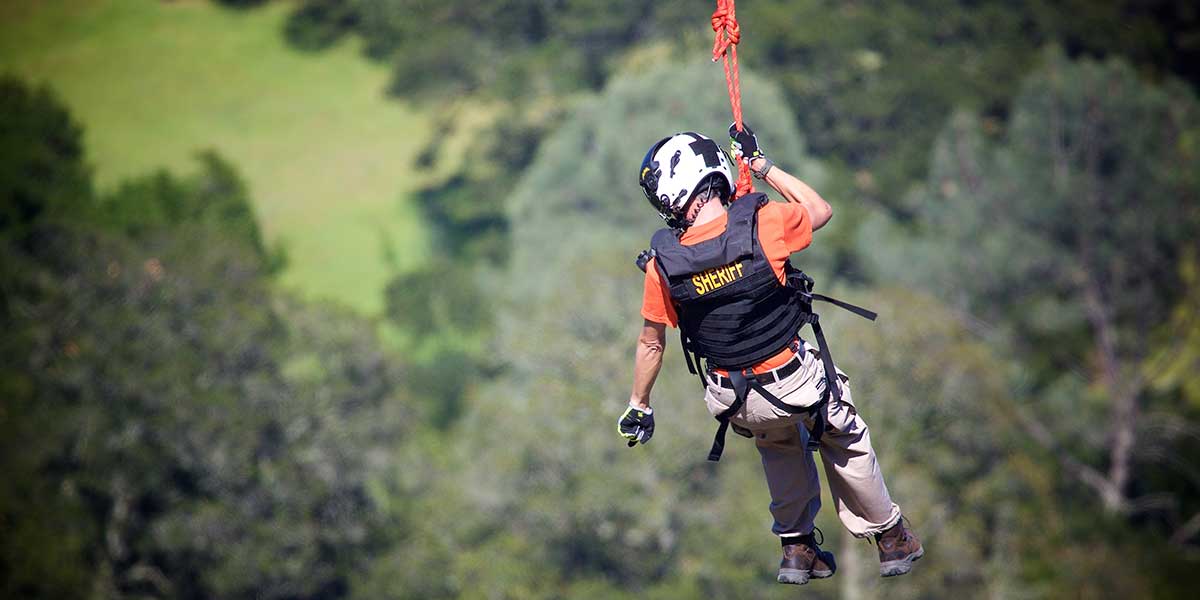AWS Public Sector Blog
Tag: disaster response
Disaster response and risk management using PNNL’s Aether framework on AWS
The Pacific Northwest National Laboratory (PNNL) developed Aether as a reusable framework for sharing data and analytics with sponsors and stakeholders. Aether is a mature cloud-centered framework designed using Amazon Web Services (AWS) serverless services to provide a cost-effective and reliable environment for a dozen projects currently deployed with the framework. Read this post to learn more about how Aether’s serverless-first approach is enabling disaster response and risk management.
How to detect wildfire smoke using Amazon Rekognition
Since wildfires can double in size and intensity every three to five minutes, early detection and reduced response times are essential. Cloud technologies, including artificial intelligence (AI) and machine learning (ML), can help with this. Learn a high-level architecture to create a solution with AWS that uses AI to identify and classify wildfire smoke imagery and then rapidly alert and inform first responders about the location and condition of a fire incident.
Creating real-time flood alerts with the cloud
The Latin America and Caribbean region is the second most disaster-prone region in the world behind Asia and the Pacific Rim, with floods being the most common disaster in the region. There have been extraordinary levels of flooding around the world—but in Panama, flooding has become particularly challenging. The AWS Disaster Preparedness and Response Team and AWS Partner Grupo TX saw an opportunity to leverage the cloud to better understand and prepare for flooding and ultimately save lives.
Hurricane season 2023: Supporting hurricane response efforts with the cloud
While the 2023 hurricane season kicks off June 1, the reality is that AWS is working to help organizations and communities respond to hurricanes long before a storm forms. Throughout the year, AWS Disaster Response develops and tests new innovations that utilize cloud technology to enable more efficient disaster response capabilities for our customers and relief organizations.
How AWS is supporting nonprofits, governments, and communities impacted by Hurricane Ian
On September 28, 2022, Hurricane Ian made landfall in Southwest Florida. At the request of standby organizations Help.NGO and Information Technology Disaster Resource Center (ITDRC), the AWS Disaster Preparedness and Response team assisted with response operations across a variety of functions in the aftermath of Hurricane Ian.
How Livingston Parish prepares for natural disasters by improving resiliency in the cloud
Natural disasters are devastating, often resulting in loss of life, massive property damage, and damage to the critical infrastructure that powers emergency services. This can prompt public sector organizations to consider building more resilient infrastructure. Such was the case for the 911 system in Livingston Parish, Louisiana, an agency that dispatches for 21 public safety agencies including law enforcement, fire, and emergency medical services, and averages over 325 calls for service per day. After a major flood in 2016 knocked out their 911 system, they worked with AWS Partner TailorBuilt Solutions, LLC. to use AWS to become resilient against disaster, reducing service interruptions and improving response times.
22 new or updated open datasets on AWS: New polar satellite data, blockchain data, and more
The AWS Open Data Sponsorship Program makes high-value, cloud-optimized datasets publicly available on AWS. The full list of publicly available datasets are on the Registry of Open Data on AWS and are now also discoverable on AWS Data Exchange. This quarter, AWS released 22 new or updated datasets including Amazonia-1 imagery, Bitcoin and Ethereum data, and elevation data over the Arctic and Antarctica. Check out some highlights.
Building resilience: Using technology to prepare for, respond to, and recover from the unexpected
Every day, people around the world are impacted by the unexpected – from pandemics, to natural and human-wrought disasters, to economic crises. Technologies like the cloud can empower communities to prepare for and respond to the unexpected so that when a crisis hits, they can continue to advance. AWS works with customers and partners to build software solutions that improve government and nonprofits’ prediction, preparedness, response, and recovery capabilities—solutions that are being leveraged across Latin America and the Caribbean.
Enhance operational agility and decision advantage with AWS Snowball Edge
In a data-dependent world, success belongs to the side with decision advantage: the ability to acquire data and make sense of a complex and adaptive environment, and act smarter and faster than the competition. Understanding global environments requires more than just more data – it requires live two- and three-dimensional maps, new support tools, improved processes, seamless connectivity, and better collaboration that can scale to the needs of the environment. This blog post explores how to address challenges of big data and accelerate time to data insights with machine learning with AWS Snowball Edge device deployment at the edge.
Create a common operating picture for search and rescue at the edge with AWS
In a recent disaster response field testing exercise (FTX), the AWS Global Social Impact Solutions (GSI) team developed a prototype cloud architecture and tested it in a search and rescue (SAR) scenario simulating a missing responder crisis. This blog post walks through the SAR simulation and result, and provides an overview of the AWS services and technical architecture components the GSI team used to provide a hybrid edge/cloud COP solution that helped locate the missing team member in the simulated scenario within 20 minutes.









